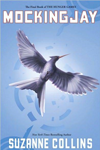
Search
Categories
Famous Authors
Top Selling Books

Book Home ![]() Books Information
Books Information ![]() My Fair Lady
My Fair Lady
My Fair Lady
My Fair Lady is a 1956 musical theater production with lyrics and book by Alan Jay Lerner and music by Frederic Loewe, adapted from George Bernard Shaw's Pygmalion. It was also made into a film by Warner Bros. in 1964
The stage musical first opened on March 15, 1956 at the Mark Hellinger Theatre in New York City. It ran for 2717 performances, a Broadway record at the time.
It opened in London on 30th April 1958 at the Theatre Royal, Drury Lane and ran for 2281 performances.
Moss Hart directed the musical, Cecil Beaton designed the costumes, and Hanya Holm choreographed. The original Playbill and original cast album included art by Al Hirschfeld, which depicted Eliza Doolittle as a marionette being manipulated by Henry Higgins, whose own strings are being pulled by a heavenly puppeteer who looks like George Bernard Shaw.
The film
The stage musical was later made into a musical film, released in 1964 by Warner Bros.. The film was directed by George Cukor, and starred Audrey Hepburn, Rex Harrison and Stanley Holloway. It won Cukor an Academy Award for Directing, and ranked #91 on the American Film Institute's 100 Years, 100 Movies.
The lead role in the film was originally intended for Julie Andrews, who played Eliza in the stage version. Hepburn was cast, despite lobbying from Lerner, because Warner Brothers didn't want to cast a stage actress. Opera singer Marni Nixon was cast to dub Hepburn's songs. Julie Andrews in fact became a screen star in her own right that same year in Mary Poppins. The controversy over the casting damaged Hepburn's career, painting her in a negative light (although Elizabeth Taylor reportedly fought long and hard for the role as well). Andrews' subsequent Academy Award nomination for Mary Poppins, which she won - and lack of a nomination for Hepburn - was seen by many as vindication for Julie Andrews, though both actresses denied that there was ever any animosity between them. Film of some of Hepburn's original vocal performances for the film was released in the 1990s, and many fans of the actress believe that it was unnecessary for her voice to be dubbed. At the very least, she could actually sing, in contrast to Harrison, whose songs were mostly recitative.
The film's copyright was owned by CBS, as the head of that company put up the money for the original Broadway production in exchange for the rights to the cast album (through Columbia Records). When Warners bought the film rights for the then-unprecedented sum of $5 million, it was agreed that the rights to the film would revert to CBS seven years after its release.
In the 1990s, the original film elements had fallen into disrepair from heavy printing and were feared in danger of total deterioration. Film restorers Robert A. Harris and James C. Katz were brought in to physically restore the film. Their work was a success, preserving this well-loved film for future generations, and a 30th anniversary re-issue in 1994 reinforced the film's popularity.